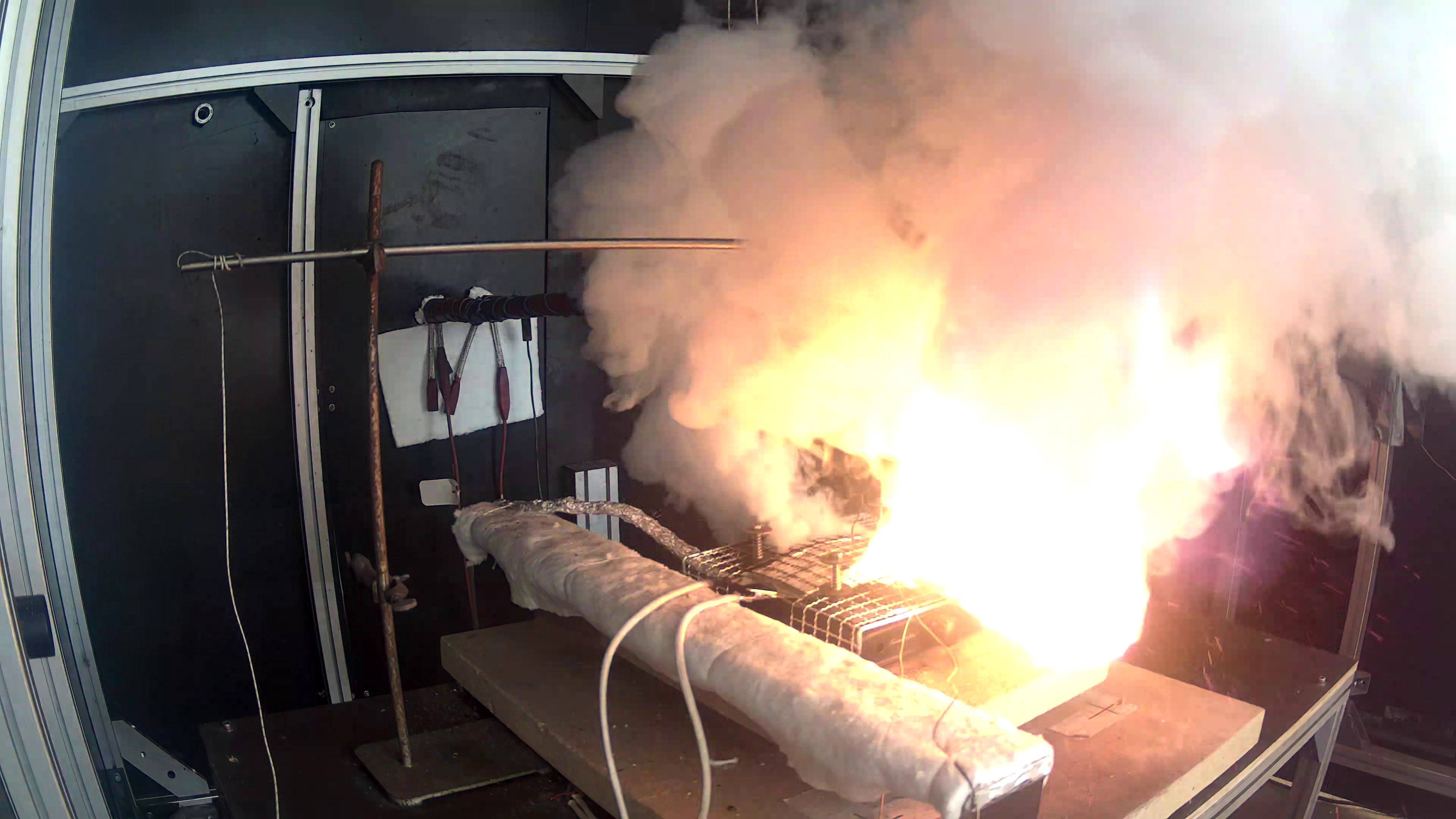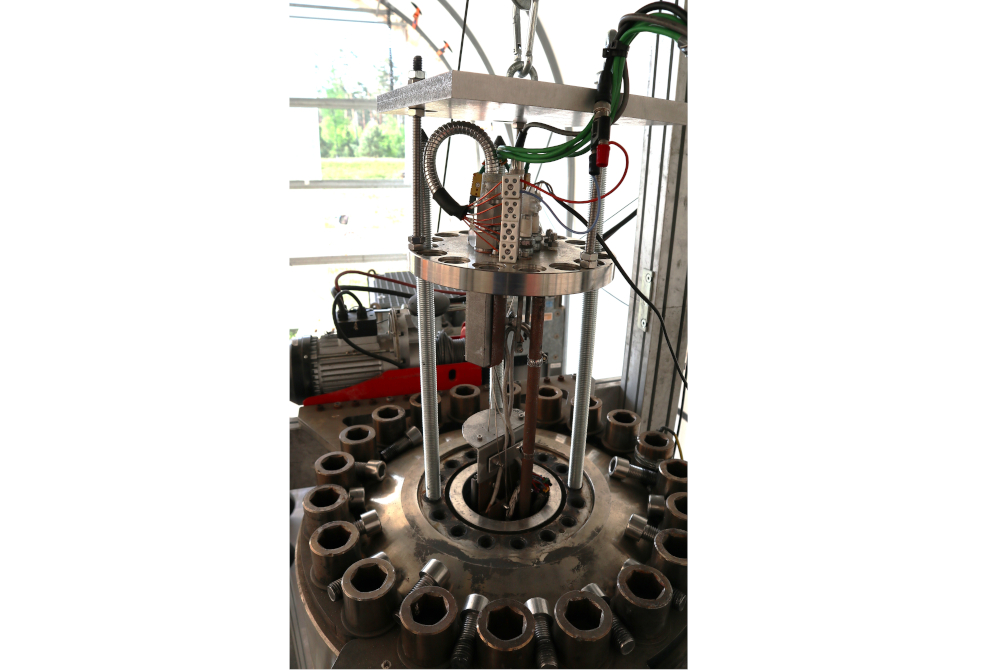
NMC pouch cell (12.5 Ah) during thermal runaway in 8-m³ room
Source: BAM
Project period
01/11/2019 - 31/01/2024
Project type
BAM project
Project status
Closed
Description
With the aid of systematic safety-related testing, a classification of the danger of lithium-ion batteries should be generated.
Location
Bundesanstalt für Materialforschung und -prüfung
Unter den Eichen 87
12205 Berlin
HaCLIB - Hazard Classification of Lithium-Ion Batteries
From very small-scale applications in pacemakers and hearing aids to stationary energy storage in the power plant sector – lithium-ion batteries have become indispensable in our everyday lives. The technology is generally safe. In spite of this, incidents with lithium-ion batteries occur again and again. In the HaCLIB project, the causes and effects of thermal runaway for different types of batteries are to be quantified.
Aim
The effects of the thermal runaway of lithium-ion batteries will be examined. Measures are to be taken either to prevent accidents with lithium-ion batteries or to reduce the effects to a harmless level. For example, this can be guidelines for emergency services in the event of battery fires or accidents with electric vehicles. However, it could also be recommendations for constructive changes in development to ensure as inherently secure batteries as possible or requirements for structural fire protection in stationary storage facilities.

Experimental preparation: Inserting the cell holder on the autoclave lid into the autoclave
Source: BAM
Methodology
The focus of this project is on the systematic experimental investigations in connection with the thermal runaway of lithium-ion batteries. Variation parameters in the experiments include cell geometry and chemistry, age and charge level as well as the size of electrochemical storage. Parameters such as gas release both directly before and also during the thermal runaway, as well as thermal release and the influence of the electrolyte composition on the thermal runaway will be determined in several specially developed test rigs.
Partners
The Hazard Classification of Lithium-Ion Batteries (HaCLIB) project is a project financed by BAM and will be carried out without any third-party funds. Due to the multidisciplinary approach of the project, colleagues from the departments of Materials Chemistry, Containment Systems for Dangerous Goods, Safety of Structures, Non-Destructive Testing and Chemical Safety Engineering are involved.


